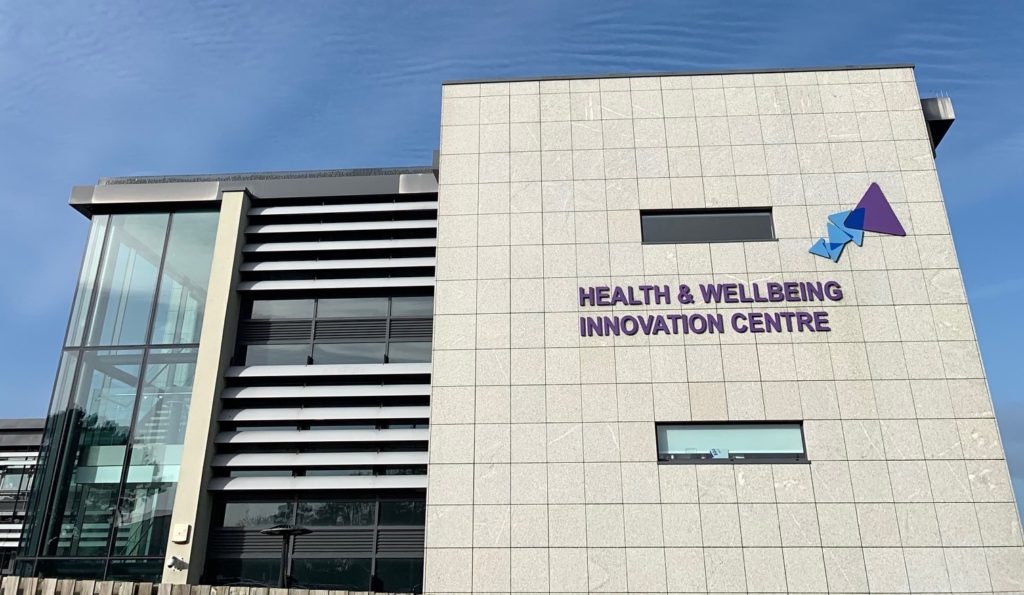With the country in a state of total, partial or local lockdown, the NHS has had no choice, but to tear up the normal procurement rules and embrace digital ways of providing clinical services in record time.
In a blog post we wrote in September last year, we quoted National chief clinical information officer Simon Eccles as saying that the NHS was “living in the dark ages” when it comes to tech. He said that other industries, such as agriculture and shipping, have made “phenomenal leaps” towards digitisation. He stressed that more money needs to be invested into technology across local providers to bring them up to speed. He suggested: “We are spending less than 2% in many of our organisations on our full digital infrastructure and technology.”
Fast forward to 2020 and, according to the Royal College of General Practitioners, in the four weeks leading up to 12th April 2020, about 71 per cent of routine consultations were remote [by phone or using video consultations].
Whether this tech revolution will be lasting or simply a healthtech boom followed by a healthtech bust once a Covid-19 vaccine is found remains to be seen.
But, the Government is certainly showing its hand early. In September it awarded £32m for transformative technology and £50m for AI projects being tested and scaled by the National AI Lab.
The health secretary, Matt Hancock, also made some of the strongest endorsement ever heard for healthtech when he announced at London Tech Week in the same month that:
It’s not only Government that is committing to lasting tech change. Dr Martin Marshall, Chair of the Royal College of General Practitioners, was recently quoted as saying: “Having the technological capability to offer remote consultations, where appropriate, will be beneficial for general practice, the wider NHS and most importantly our patients, long after this pandemic has ended.”
One could argue that for tech suppliers there is now, more than ever, a greater appetite for technology driven solutions to address the most pressing needs of local NHS providers. But, for SMEs especially, it can still be a tough market to make inroads.
Figures from the govspend.org website show that at the end of Oct 2019 63% of spending by NHS Digital was still going to non-SMEs.
All is not lost though. SMEs just need to do more to help themselves: building awareness, being correctly positioned and effectively communicating with NHS providers is half the battle won.
There is a necessity to show how you have helped hospitals, GPs, mental health and community services – sharing examples of best practice and guiding health providers through experience.
Ultimately, SMEs need to get better at creating stories and telling them, understanding which channels to use to reach the right audiences, and how to use that content to support your sales team and pipeline.
1) Identify buyers and stakeholders
Create a list of who you are trying to reach – by this, we mean not only the buyer, but also any stakeholders that may need to be involved.
If your solution needs to be on-premise, then it’s likely you’ll have some involvement with the IT department of the health provider. But, if you are cloud-based, you may well find that you are selling directly to the department or clinical lead. And, of course, if your system requires whole provider buy-in, you will most likely need to target the c-level execs. It’s far from a simple sell.
The list doesn’t need to be enormously detailed, but it will influence how you reach out to people and ultimately how you tweak your content to ensure it will resonate with them.
It’s also really important, more so even than identifying buyers alone, to understand the knowledge level of the buying audience and stakeholders, for example:
- If your technology is new, so new in fact, that buyers are unlikely to know about it or understand it, you’ll need to educate them before a sale can happen. For example, we may all know the term AI (Artificial Intelligence) now, but what did we really know even 12-months ago? Do NHS trusts know enough now to put their hands in their pockets and invest? The tech industry is driven by pioneering innovations and its often this very thing that also becomes the sale blocker. Few public sector bodies will take a risk on untried, unproven technologies.
- It may be that the technology is understood or known, but not the benefits. The buyer could have a critical knowledge gap that is preventing them hitting the green light. When the public purse is at stake, demonstrating how a product or solution can reduce costs, increase productivity or drive quantifiable change is essential. Certainly historically, the NHS is no place for ‘taking a punt’.
- It could also be the case that whilst the technology and its benefits are widely known, you as a business are not. As mentioned above, SMEs have a hard time in the public sector – not least the NHS – proving your worth against larger, more well-known players, showing where you have done it before, and becoming a safe bet is no small feat.
Again, this doesn’t need to be an exhaustive planning phase, but buying audience knowledge does impact your next steps.
Tip 1: Whatever way you intend to tell your story to the NHS, always keep your audience homework to hand.
2) Messaging that encourages a sale and doesn’t frighten people away!
What are the messages that you want to get across? N.b. this isn’t the same as the overall story. The story is the story, but what tone do you need to get across and what do you want the reader [listener / viewer] to come away thinking about you and the business?
Right now, we hear the message of ‘disruption’ quite a lot [i.e ‘we’re a disruptor’ or ‘we’re a disruptive business’]. It’s an understandable message. The NHS is traditionally dominated by big suppliers with very little desire to innovate.
Equally, the NHS has – traditionally – had little interest in doing things differently – although with the ongoing pandemic we have seen a step change in attitudes and a move towards ‘we just need to get this done’. Step forward disruptive companies.
We feel there needs to be a balance struck. A business can be disruptive if it can also be shown to be:
- Proven
- Trusted
- Risk free
- A safe pair of hands
- Wanted / desired
- Measured
The tone of the business can be fun, youthful, energetic and exciting, but if you’re regularly pitching to the c-level and there are six-figure sums at stake, perhaps the tone of the business needs to be more professional, serious or business-like?
Work with your senior team to understand what they want the tone of the business to be and what messages they want to give to people.
Ultimately, even with big spending promises from the Government, NHS providers will always have their wings clipped by budget constraints. The high profile and billion-pound failures of the National Programme for IT back in 2002-2011 live long in the memory. Every penny must count towards something and, like it or not, risk-free and safe is likely to win out over an unproven disruptor.
Tip 2: Whenever you produce – a piece of content, a video or social media message – write it out and then check that both the tone is correct, and that it’s on message.
3) Campaigns
You need to carry out more research into your buying audience – this is an extension of point one. Get your team together and agree between you: what are the pain points of your customers and prospects now? What are they struggling with today? What do they need help with right at this moment in time that will lead them to you?
Tip 3: Create a big chart with a semi-circle line – at one end write ‘new and emerging’, in the middle write ‘current’ and at the end write ‘old and boring’. Plot your prospects issues on the chart and then start to think about campaigns that can support either those in ‘new and emerging’ or ‘current’ sections.
4) Assets worth having
What stories do you have available to underpin your campaign and, what assets do you have to support the stories? Any customer that will speak on your behalf, and or a user of the system such as doctor or nurse or even a patient, is always going to be your strongest asset. If you think back to messages around being ‘proven and a safe’ choice, nothing speaks louder than a customer reference. The timing of the customer reference is important too – a new contract win isn’t quite as strong an asset as a 6 – 12-month-old customer with real ROI to show.
Do you have a physical product to show off? In the B2B tech world, driven by cloud deployments, a physical product is becoming less common, but it’s certainly possible.
Other potential assets to help tell your story:
- Loyal customer, end user [patient] or partner
- Physical product that can be demonstrated
- Great spokesperson
- Unique [really, really unique] research, study or survey
- A truly unbiased whitepaper or other detailed view of a technology or solution
- A LinkedIn group or forum that you own
- An infographic or other relevant image
- A well followed podcast [or podcast series]
Tip 4: If you plan by campaign [which is always a good idea], create a spreadsheet that tracks campaigns, messages, storylines and assets available to support each – like a matrix. Keep it updated.
5) Inputs: stories need effort
What can you put into the process? A story doesn’t tell itself. Do you have someone in the business that can, for example, interview a customer and draft a piece of content? Do you need to allocate budget and outsource that role? Do you need to put time into building a demonstration product or organising a roadshow [perhaps virtually]?! Will you need to allocate funds for social media advertising, paid-for media or paid search?

6) Activities
How you communicate a story doesn’t have a single answer. Under the banner of PESO [Paid, Earned, Shared and Owned media] the options available are quite wide. Here’s a working example:
You have fabulous hospital customer that is willing to be a reference for you [that’s the asset]. You’ve set aside budget and hours [the input] and decided to create:
- A written press release to secure Earned media [press coverage] with a view to creating more awareness, understanding and trust in what you do
- You write a small story for posting to your owned website, LinkedIn page and blog, which helps with SEO and inbound leads
- You work with the customer to create a video that both parties can use on Shared media [mostly likely LinkedIn and Twitter]
- And, then, to really drive lead generation, you create a paid LinkedIn advertising campaign to specifically target the desired job titles and drive back healthcare leads to a bespoke landing page and detailed case study
Ultimately, the PESO activities chosen [even if it’s all of them] should be linked back to the specific need of the audience. If you need broad awareness of the business or solution, make use of Earned media. If you want engagement and interaction, use social media. If you want to deliver specific leads, think about social media advertising and also paid campaigns with the titles that your audiences are engaging with.

7) Activities [customer]
Working with an NHS customer asset takes patience and a great relationship. Unlike an article or whitepaper authored internally to a business spokesperson, you’ll really need to follow a strict process to develop customer content, especially in the NHS. In summary:
- Is the project live?
- Is the customer happy?
- Interview the sales or business development person closest to the story
- Interview the customer to get their input too – in their own words. VERY rarely does a good story develop without the early involvement of the customer
- Create a complete first draft for approvals. Don’t rely on the sales person to do this for you – take ownership. Have a single person handle the full edits and approval process from start to finish
- Make sure the NHS provider’s press team understands what is happening, and when – don’t side step the press team, if you try, it could be the end of the possibility to collaborate
- If the project size is significant, expect to be asked to include a quote from the local counsellor and not just the customer lead
- If the project could be viewed as especially political, expect that delays may happen and more reassurance needed
- Set everyone at ease by working on a small piece of content initially – like a press release – and scale up depending on the capacity and willingness of the customer.
Tip 5: Preparation is everything. Think about the questions you want to ask the customer, write them down. Ask a colleague to join the call with you – one person to ask questions and respond with the second person making notes and jotting down any extra questions that have come up. Recording the call helps [with permission of course].
8) Activities [Earned media]
If your business or solution is lacking broad awareness or knowledge, often Earned media is the best answer, but knowing who to target and how takes research. There are lots of ‘news wire’ services on the market that can take a press release for you and distribute it out to the media. And that is all it will do. I’d be very surprised if any journalist at the other ends reads it. News wire services are useful for seeing your press release published on third tier websites and that in turn may help with google search results. However, if you really want a journalist to pick up your story and publish it, then it takes a more targeted approach.
For NHS tech stories, start regularly reading the healthtech media, such as Journal of MHealth, edited by Matthew Driver. Make a note of the journalists specifically writing about issues and stories that are similar to what you do, and then contact them directly by email with a clear summary of your story and why they should be interested. Here’s some suggestions:
Tip 6: Journalists are really busy. Don’t be surprised if they ask for an interview so they can understand your story more quickly. Don’t be surprised if they take your press release and shorten it even further. Don’t be surprised if they ask you for exclusive content – after all we all need clean, exclusive content to gain better search results.
9) Measure and repeat
The smart thing to do when telling a story to the NHS is track results, measure, repeat or improve. If you place paid-for advertorial with Health Service Journal and the results aren’t great or as expected, you’ll need to think about whether it’s the story, the way it was told or the media channel used to share it.
Start tracking at four levels using the AMEC framework:
- Outputs – What was the reach of the paid advertising? How many visitors to the website? How many posts, tweets or retweets, how many people attended the event, and how many potential readers of the media coverage?
- Outtakes – What was the response and reactions of your target audiences to the activity? How attentive were they to the content, what was their recall, how well understood is the topic, did the audience engage with the content or did the audience subscribe to more information? This will need prospect research.
- Outcomes – measures the effect of the communications on the target audience. Have the target audience increased understanding, has it changed their attitude to the topic, has it increased trust and/or preference, has it had an impact on the intention to do something (e.g. trial, subscribe, register) or increased online advocacy.
- Business Impact – has there been a reputation improvement, relationships improved or established, increase in sales or donations, change in policy, or improved social change? This should be a clear demonstration of business outcome and link to organisational objectives.

10) Learn from others
Case study 1: Refero, the next right thing

You’d need a microscope to find the fine line that exists between shouting into space about your freeware during COVID-19, and trying to show the difference the thing you’ve invented could possibly make, if given the chance. And let’s face it, most microscopes have pretty full agendas at the moment.
Opening up the pricing, or lack of, on products and services for the public sector is absolutely the right thing to do. But, a lot of truly life-changing tech has been pushed under the ice by the blast of louder, more expensive rescue boats mooring up and shadowing the landscape. And then, of course, there’s the usual public sector problem, the procurement rules switched again, right when you needed them most.
We’ve been giving the same advice to clients wanting to discuss their COVID-19 offerings. Most importantly, asking the question, if you go out with this, will you be able to fulfil your promises, on a doily-thin supply chain and reduced team? How will doing this affect your existing customers, what’s the focus there? And, most importantly from the media perspective, who has already benefitted from your decision to offer this, how are they using it, and what has it changed?
Dan, CEO at Refero, got in touch just before we went into lockdown. Refero makes secure patient-clinician teleconference stuff. Video appointments, personal contact for people with mental and physical health professionals. We’ve been working together for two years and it’s been a very enjoyable campaign, because attitudes and customer numbers have bloomed steadily.
But in early March, things became darker, and Dan knew that Refero’s tech was going to become not an alternative or a time and money saving choice, but a necessity; a utility. And we’ve seen it happening; we’ve all got stories now. People are having to speak to doctors and nurses, psychologists and consultants, on video calls. People are having to hear very bad news about their relatives over video. Some people are even having to say goodbye this way. To borrow a song title from a recent film that many of you will have seen several (hundred) times, video consultation became the next right thing, very quickly.
Therefore, it became a sensitive campaign to pitch. To a medical professional, this is a solution to a problem. To a patient or relative, this is an alternative that in many cases, can’t replace what should have been. The messages are completely different to every stakeholder, but with the same end goal – making the best use of the next right thing; quickly and easily available to take the pain away.
We’ve worked with a press release on the offering itself, and several detailed briefings from Dan and Refero’s chief medical officer Dr Jackson. As the offering gathered momentum we added statistics on uptake (nearly 2000 users in the first few days) and shaped the story to include a steady drip of customers across the health and social care sector who use Refero to show how it can be utilised. Roy Lilley’s NHSmanagers.net site picked up the cause straight away, followed by Tier One health titles HSJ and Digital Health, as well as Raconteur and Computer Weekly. As we widened the call to include free provisioning to local government and police forces, we spoke to UK Authority, Tomorrow’s Care, Police Professional and Police Oracle. We developed important positions on issues such as how video conferencing could be practical for retired GPs re-entering the workforce, and worked with selected journalists on developing thought leadership on how video is the next right thing in the ICU.
It’s been constant, daily media relations work from Rebecca and Martine that has gotten us the reach and the 25 pieces of coverage in less than six weeks, combined with Dan and his team showing the willingness to get involved and be present in the media whilst deploying for customers and keeping the service secure and reliable. The ‘pay-off’, if there has to be one, is the absolute knowledge that we’ve helped make people’s lives better. As Dan said right from the start, this is a moral, not a business decision. We’ve all done the next right thing and we’re proud to have helped.
About us

At Mantis, we help technology providers tell stories using clever content circulated through the right channels, to reach the right people. We are experts in a very specific area – creating content about the technology, services and ideas that the public sector is using to change people’s lives. We help our clients become, and stay relevant in this area by devising and delivering earned, paid, shared and owned content strategies for them. Our skills and experience are recognised by our clients, the media we work with, and the public sector teams we work with too. Mantis is trusted across the education, NHS, local government, police and central government as an agency that is sympathetic to customer need.
Mantis team
Each campaign team is picked for every client by our GM, according to skills and experience. We focus on what’s important to you. Clever content? Media relations? Strategic counsel? Events expert? Someone local to you? We provide the most suitable.
Our services
- Customer stories. We become your agent for customer content creation. We develop the relationships, discover new stories, and turn happy customers into fantastic advocates across written and spoken media
- Earned media contact. We create news and thought leadership using the narratives that you have to create solid outcomes in the technology, public sector, national and broadcast media. We help you set the strategy that will have the most impact
- Paid media campaigns. We believe paid media campaigns can have a place in our impact-focused strategies. We manage your content marketing needs and create intelligent, outcome driven copy that drives leads to your digital presence
- Owned content. We create web and digital content for sites and specific content hubs, as well as print copy. We manage blogs, set content strategies, and offer help in the creation of message and tone for all corporate material
- Shared media. We’ll work with you to plan and manage the content for your social channels, creating engagement that makes the impact we’ve planned for
- Events and panels. Our team loves organising bespoke events in our specialist areas, from closed door roundtables to panel discussions and conferences
- Influencer relations. If your target buyer market is small and you think traditional PR won’t show value, we can create micro-influencer and personal content marketing campaigns which get the desired results
- Advice and counsel. Our senior team is a strong presence on all our campaigns and we provide Board level consultation on communication strategy and crisis management issues
To get in touch with the Mantis team to discuss the support you need with PR and communications, please contact Rebecca, Martine and Caitlin on salesandmarketing@mantispr.co.uk









